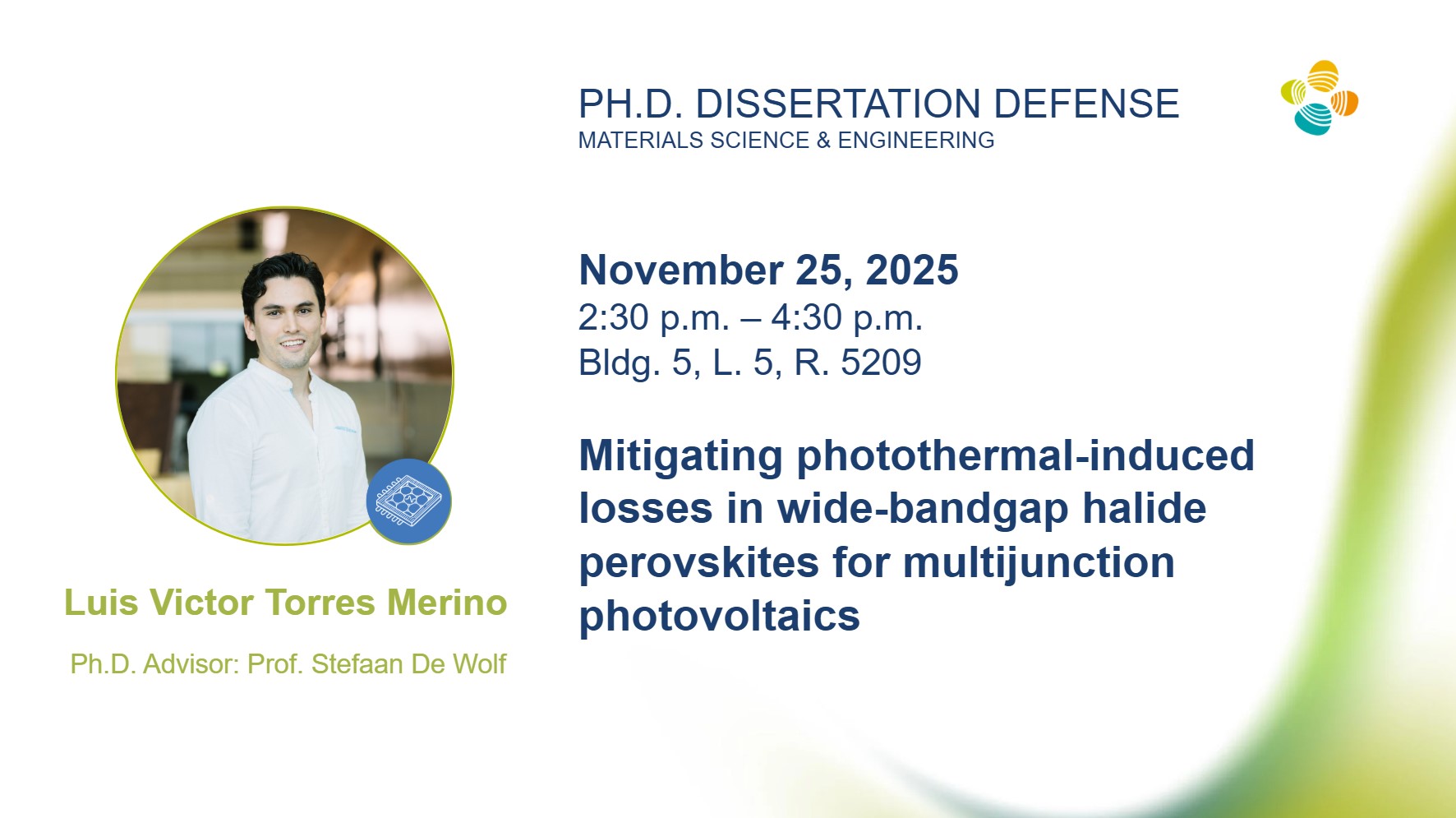Nov 2025
Mitigating photothermal-induced losses in wide-bandgap halide perovskites for multijunction photovoltaics

Committee Members Information
- Ph.D. Advisor: Professor Stefaan De Wolf
- Committee Chair: Professor Suzana Nunes
- External Examiner: Professor Ulrich Paetzold
- Committee Member: Professor Frederic Laquai
Zoom link: https://kaust.zoom.us/j/91344664949
Abstract:
The commercialization of halide perovskite multijunction photovoltaics is greatly impeded by the operational instability of the wide-bandgap perovskite subcells, a phenomenon primarily driven by light- and heat-induced halide segregation. This thesis presents a comprehensive strategy to mitigate this critical challenge through enhancing charge extraction and implementing both bulk and surface perovskite defect passivation. The research first delineates a universal method for improving hole collection in p-i-n architectures by precisely engineering the energetic alignment at the hole-selective contact using blended self-assembled monolayers, leading to reduced hole accumulation and minimized halide segregation. Subsequently, a synergistic bulk and surface passivation strategy is employed to improve the crystal, morphological, and electronic properties of the perovskite absorber, thereby increasing its intrinsic photothermal stability. As these passivation methods modify the electronic structure of the perovskite, a third component of this work emphasizes the necessity of reevaluating transport layer selection upon perovskite passivation; this is demonstrated by utilizing evaporated fullerene derivatives in p-i-n architectures to optimize the conduction band alignment at the electron-collecting interface, reducing charge accumulation, and further suppressing halide segregation.
A key contribution of this study is the establishment of a correlation between carrier collection and halide segregation, providing a predictive framework for identifying stable interfaces. The universality of this methodology is confirmed through validation across multiple perovskite compositions. Collectively, these findings offer a coherent strategy for accelerating the development of photothermally stable wide-bandgap perovskite solar cells for tandem applications.